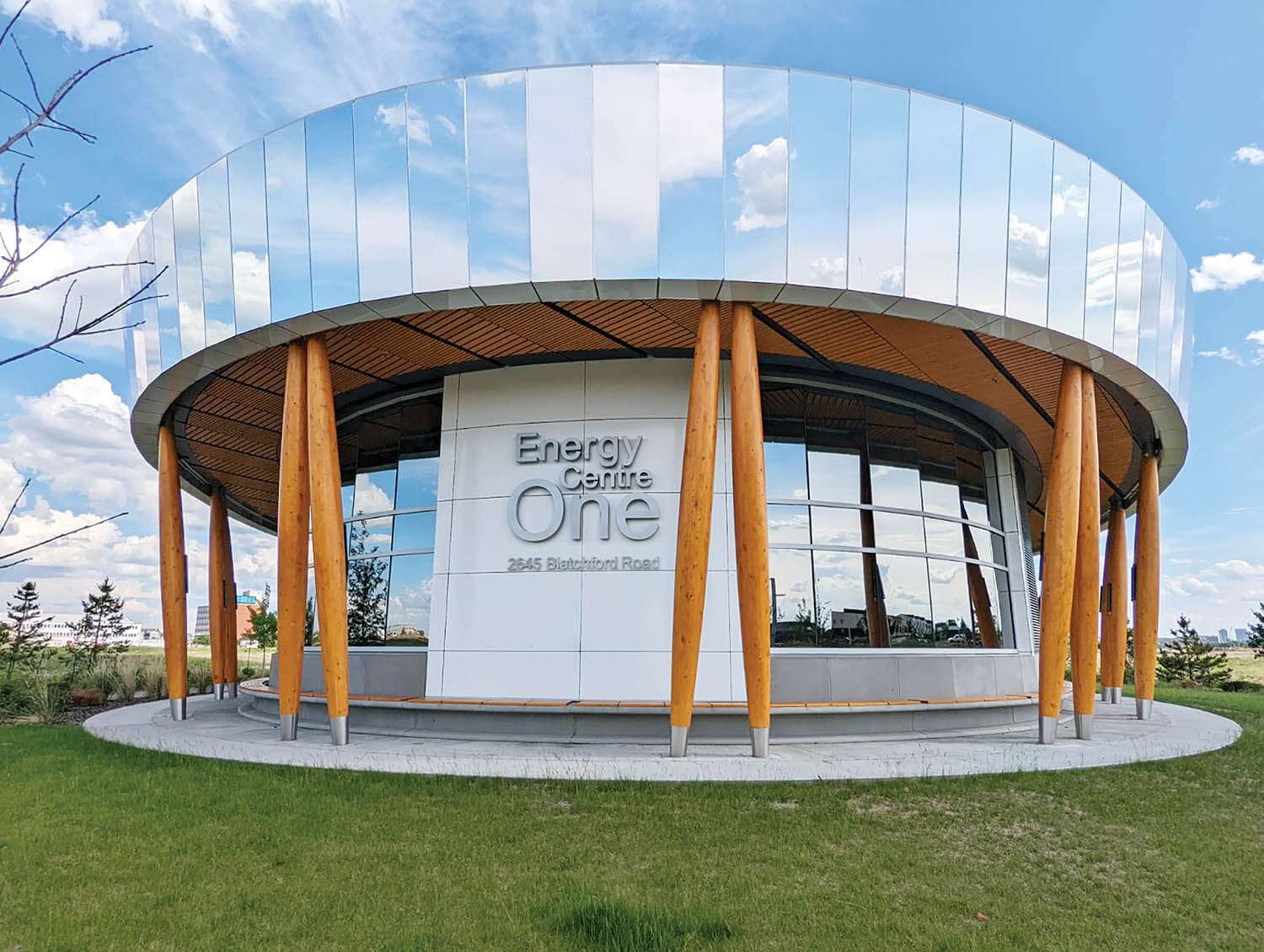Blatchford’s one-megawatt heat pump is providing clean, green energy from deep underground.
In an open field near the centre of the Blatchford redevelopment sits a small round building with mirrored cladding reflecting the bright blue sky and the words “Energy Centre One” displayed prominently on one wall. Inside is an enormous heat pump, a machine that efficiently converts energy from one state to another through a loop of pumps, compressors, valves and refrigerant.
“It’s 10 times more efficient than any furnace,” says Christian Felske, a professional engineer and the City of Edmonton’s Director of Renewable Energy Systems. “The way mechanical engineers describe efficiency is the COP value, the coefficient of performance. This one can achieve 10, which is massive.”
The 536-acre Blatchford redevelopment is one of the City of Edmonton’s signature environmental initiatives. In partnership with private developers, the City is turning the former city-centre airport into a carbon-neutral community for 30,000 Edmontonians. The City committed to powering Blatchford with a utility driven entirely by renewable energy. This heat pump – together with the ones to follow – is the key to making that happen.
Next to Energy Centre One is a large stormwater pond that will ultimately be in the middle of Blatchford’s central park. Underneath the pond is a geo-exchange field consisting of 570 bore-holes of about 150 metres each. At that depth, the ground is a consistent eight degrees Celsius, summer or winter, no matter the weather, because the ground acts as a giant solar battery, absorbing and storing heat. A mix of water and refrigerant is passed through the pipes in the boreholes, drawing the energy from the ground. The heat pump then circulates that fluid through a network of underground pipes to the homes that have been built at Blatchford, where small heat pumps draw heat from or insert heat into the system, depending on need. It means there are no natural gas furnaces or hot water heaters at Blatchford. As buildings get both their heating and cooling services from the same system, there is also no need for separate air conditioning. As Felske says, you can find renewable energy in many places, including the sun, the wind and the water. But it’s also hidden underground. “Maybe that’s less sexy and it’s sometimes forgotten, but it’s efficient,” he says.
